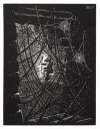Paul
Klee
Paul Klee, celebrated for his interpretative approach to colour and form, influenced modern art with his intricate drawings and inventive theories. If you’re looking for original Paul Klee prints and editions for sale or would like to sell, request a complimentary valuation and browse our network’s most in-demand works.
Paul Klee art for sale
Discover Paul Klee prints for sale, exclusively available through our private network of collectors. Explore signed and unsigned screenprints, lithographs, digital prints, and rare editioned proof prints by era-defining blue chip artists.
Sell Your Art
with Us
with Us
Join Our Network of Collectors. Buy, Sell and Track Demand
Biography
Born in 1879 in Switzerland, Paul Klee was a prodigious child, influenced heavily by his parents, both of whom were musicians. This early exposure to the arts fostered a deep appreciation for creative expression, which he pursued through extensive training at the Academy of Fine Arts in Munich. Initially drawn to music, Klee shifted his focus to visual arts, where his talents truly began to flourish.
Klee’s journey was characterised by continuous experimentation with styles and mediums, drawing significant influence from Expressionism, Surrealism, and Cubism. His participation in the avant-garde group Der Blaue Reiter further diversified his style, pushing him toward the abstract and the imaginative. Klee’s work during this period evolved to incorporate a complex blend of texture, colour, and symbolism, marking the beginning of his lifelong exploration of the abstract.
Throughout his career, Klee’s work demonstrated a fascination with the intersection of art and music, often incorporating rhythmic patterns and tonal harmonies into his visual compositions. His theoretical writings on colour theory and art functions, particularly noted in his teaching at the Bauhaus school, have influenced generations of artists and educators.
Key works like Twittering Machine and Fish Magic exemplify his mastery of blending reality with fantasy, using colour and form to evoke emotional and cerebral responses. Klee's art consistently pushed the boundaries of traditional forms, employing abstract techniques to dissect and reconstruct reality in ways that provoke thought and inspire innovation.






















